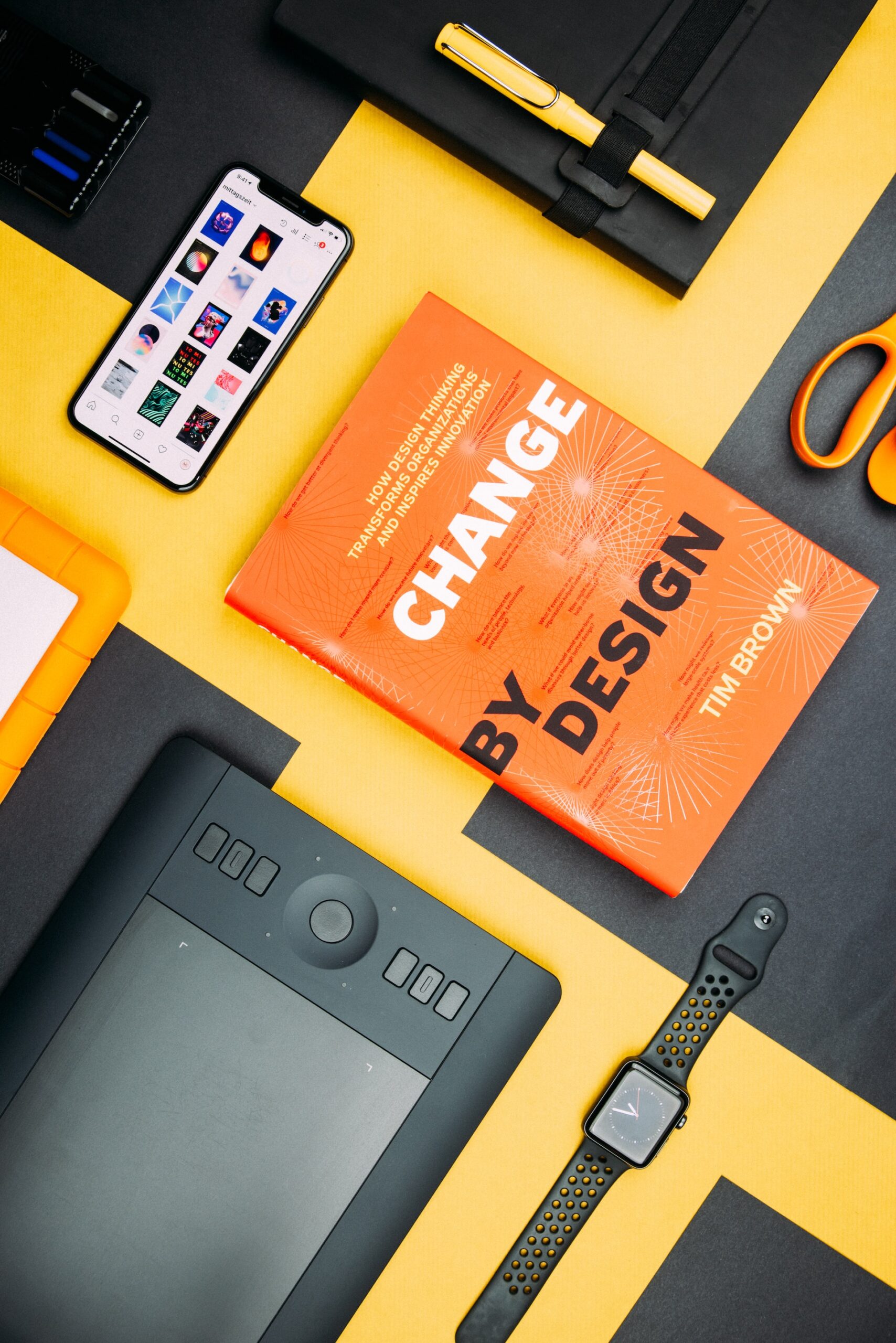
Exploring the Latest UI/UX Design Trends for Engaging User Interfaces
In today’s digital world, UI/UX Design Trends plays a crucial role in creating successful and engaging user experiences. As technology continues to evolve, it’s essential for businesses to stay up-to-date with the latest UI/UX design trends to remain competitive and provide innovative solutions for their users. In this article, we will explore the most significant UI/UX design trends in 2023 that are shaping the future of digital design.
Voice User Interfaces (VUI) – UI/UX Design Trends:
Voice User Interfaces (VUI) are gaining popularity as an emerging trend in UI/UX design. With the integration of VUIs in various devices and applications, designers are faced with the challenge of creating intuitive and user-friendly voice experiences.
One of the key trends in VUI design is the use of natural language processing (NLP) to create more conversational user experiences. By incorporating NLP, VUIs can understand the nuances of human speech, including slang, colloquialisms, and regional dialects. This makes the interactions with VUIs feel more human-like and less mechanical.
Another trend in VUI design is the adoption of multimodal interfaces. These interfaces combine voice commands with other forms of input, such as touch, gestures, and visual feedback. By incorporating multiple modes of interaction, VUIs become more flexible and adaptable, allowing users to switch between different modes based on their preferences and needs.
Designers are also exploring innovative ways to provide feedback and context in VUIs. For example, audio cues or haptic feedback can be utilized to indicate when a VUI is listening or processing a command. Visual or audio feedback can also be implemented to confirm that a command has been understood and executed.
Additionally, designers are focused on creating inclusive and accessible VUIs. This involves designing for users with disabilities, such as visual or hearing impairments, and ensuring that VUIs are user-friendly for non-native speakers or individuals with different language backgrounds.
The world of VUIs offers exciting opportunities for innovation and creativity in UI/UX design. As VUI technology continues to advance, designers will be challenged to create more engaging, user-friendly, and intuitive voice experiences.
“VUIs are an exciting area of UI/UX design, with many opportunities for innovation and creativity.” – Source

Image Source: FreeImages UI/UX Design Trends
The Rise of VUI in UI/UX Design Trends
The rise of Voice User Interfaces (VUI) in UI/UX design is revolutionizing the field by providing a more natural and intuitive way for users to interact with technology. VUIs are increasingly utilized in a wide range of devices and applications due to their numerous advantages.
One of the key drivers behind the rise of VUIs is their ability to offer hands-free interaction. This feature is particularly valuable in situations where users’ hands are occupied or when traditional user interfaces, such as keyboards or touchscreens, are unavailable.
Accessibility and inclusivity are also driving factors behind the popularity of VUIs. They provide an easier means of interaction for individuals with disabilities, such as visual or motor impairments. Additionally, VUIs help overcome language barriers for non-native speakers, making technology more accessible to diverse user groups.
VUIs also open new possibilities for UX designers to create engaging and interactive experiences. By leveraging natural language processing (NLP) and machine learning, VUIs can learn from users’ behaviors and preferences over time, enabling designers to personalize the experiences to meet individual user needs.
However, designing effective VUIs presents unique challenges. Designers must consider factors such as context, tone, and language to ensure that the interactions feel natural and intuitive for users.
Despite the challenges, the rise of VUIs represents an exciting development in UI/UX design. It offers new opportunities for designers to create innovative, user-friendly, and accessible experiences. As VUI technology continues to evolve, designers must stay updated with the latest trends and best practices to create effective and engaging VUI experiences.
“The rise of VUIs represents an exciting development in UI/UX design, offering new opportunities for designers to create innovative, user-friendly, and accessible experiences.” – Source
How VUI is Changing the Way We Interact with Technology
The emergence of Voice User Interfaces (VUI) is transforming the way we interact with technology and impacting UI/UX design trends. Here are some key ways in which VUI is changing the field of UI/UX design:
- Conversational interfaces: VUIs enable users to interact with technology in a more conversational manner, requiring a natural and human-like tone in interface design. Designers must consider context, tone, and language to ensure interactions feel natural and intuitive.
- Multimodal interfaces: VUIs can be combined with other input forms, such as touch, gestures, and visual feedback, to create multimodal interfaces. These interfaces offer greater flexibility and adaptability, allowing users to switch between different modes according to their preferences and needs.
- Personalization: VUIs can provide personalized experiences by learning from users’ behaviors and preferences over time. Designers can utilize machine learning algorithms to analyze user data and create tailored experiences for each individual user.
- Accessibility and inclusivity: VUIs enhance accessibility for individuals with disabilities, such as visual or motor impairments. Designers must consider accessibility factors, such as providing audio feedback for blind users or haptic feedback for deaf users.
- Designing for voice-first devices: VUIs are commonly used in voice-first devices like smart speakers and virtual assistants. Designers must consider the limitations of these devices, such as the absence of a visual interface.
VUIs are transforming the way UI/UX designers approach interface design. Designers must consider the unique aspects of voice interactions and create interfaces that are natural, intuitive, and personalized. As VUI technology advances, designers have more tools at their disposal to create engaging and interactive voice experiences.
“VUIs are changing the way UI/UX designers think about creating interfaces for technology.” – Source
Best Practices for Designing VUI
When designing a Voice User Interface (VUI), it’s essential to follow best practices to ensure a positive user experience. Consider the following key considerations:
- Keep it simple: Design the VUI to be intuitive and easy to use. Avoid complex menus or options that may confuse users. Use simple language and avoid technical jargon.
- Be conversational: VUI users expect natural language interactions. Use a conversational tone, avoid sounding robotic, and utilize common phrases instead of complex sentences.
- Provide feedback: It’s crucial to provide users with confirmation that their actions have been acknowledged. Implement confirmation messages and utilize audio cues like beeps or chimes to indicate that the system is listening.
- Anticipate user needs: A well-designed VUI should be able to predict what the user might need next based on their previous interactions. For instance, if a user orders a pizza, the system could suggest a drink or side dish.
- Offer help: Ensure users understand how to interact with the system. Provide clear instructions and guidance on how to use the VUI effectively.
- Test and iterate: Conduct user testing to identify areas for improvement in the VUI design. Use feedback to make iterative improvements and enhance the user experience.
- Consider accessibility: Ensure your VUI is accessible to users with disabilities. Provide options for users who may have difficulty speaking or hearing, and ensure compatibility with assistive technologies.
By adhering to these best practices, you can design a VUI that is user-friendly, intuitive, and provides a positive user experience.
“By following these best practices, you can design a VUI that is easy to use, intuitive, and provides a positive user experience.” – Source
3D Design
3D design is gaining popularity in UI/UX design due to its ability to create immersive and engaging interfaces. Here are some key considerations when utilizing 3D design in UI/UX:
- Performance: It’s important to optimize 3D elements to minimize performance issues, especially on low-end devices. Designers need to ensure that 3D models and textures are optimized for smooth interaction.
- Accessibility: When incorporating 3D elements, it’s crucial to ensure that they do not create accessibility issues for users with disabilities. Consider providing alternative options for users who may have difficulty perceiving or interacting with 3D elements.
- Realism and immersion: 3D design allows for the creation of realistic and immersive experiences. Designers can utilize lighting, textures, and animations to enhance the sense of realism and create engaging user interfaces.
- User interaction: 3D design offers opportunities for more interactive user experiences. Users can manipulate and explore 3D objects, providing a more engaging and dynamic interface.
- Branding and aesthetics: Incorporating 3D design elements can help create a unique and visually appealing brand identity. Designers can utilize 3D elements to bring a distinct style and aesthetic to user interfaces.
When utilizing 3D design in UI/UX, it’s crucial to strike a balance between performance optimization, accessibility, and creating immersive user experiences.
“3D design allows for the creation of realistic and immersive experiences, enhancing user interfaces.” – Source
Conclusion
In conclusion, staying updated with the latest UI/UX design trends is essential for businesses looking to create innovative and engaging user experiences. Voice User Interfaces (VUI) are a significant trend, enabling more conversational and personalized interactions with technology. The rise of VUIs is transforming the way we interact with technology, emphasizing conversational interfaces, multimodal interactions, personalization, and accessibility.
Designing effective VUIs requires careful consideration of context, tone, and language, along with adherence to best practices such as simplicity, conversational tone, and providing feedback. Additionally, 3D design offers opportunities for immersive and visually appealing interfaces but requires attention to performance optimization and accessibility.
By incorporating these trends and best practices into UI/UX design, businesses can create innovative and engaging user experiences that meet the evolving demands of the digital world.
“Staying updated with the latest UI/UX design trends is essential for businesses looking to create innovative and engaging user experiences.” – Source










Permalink
Wow, amazing weblog layout! How lengthy have you been running a
blog for? you make blogging look easy. The entire glance of
your site is magnificent, let alone the content material!
You can see similar: sklep online and here sklep